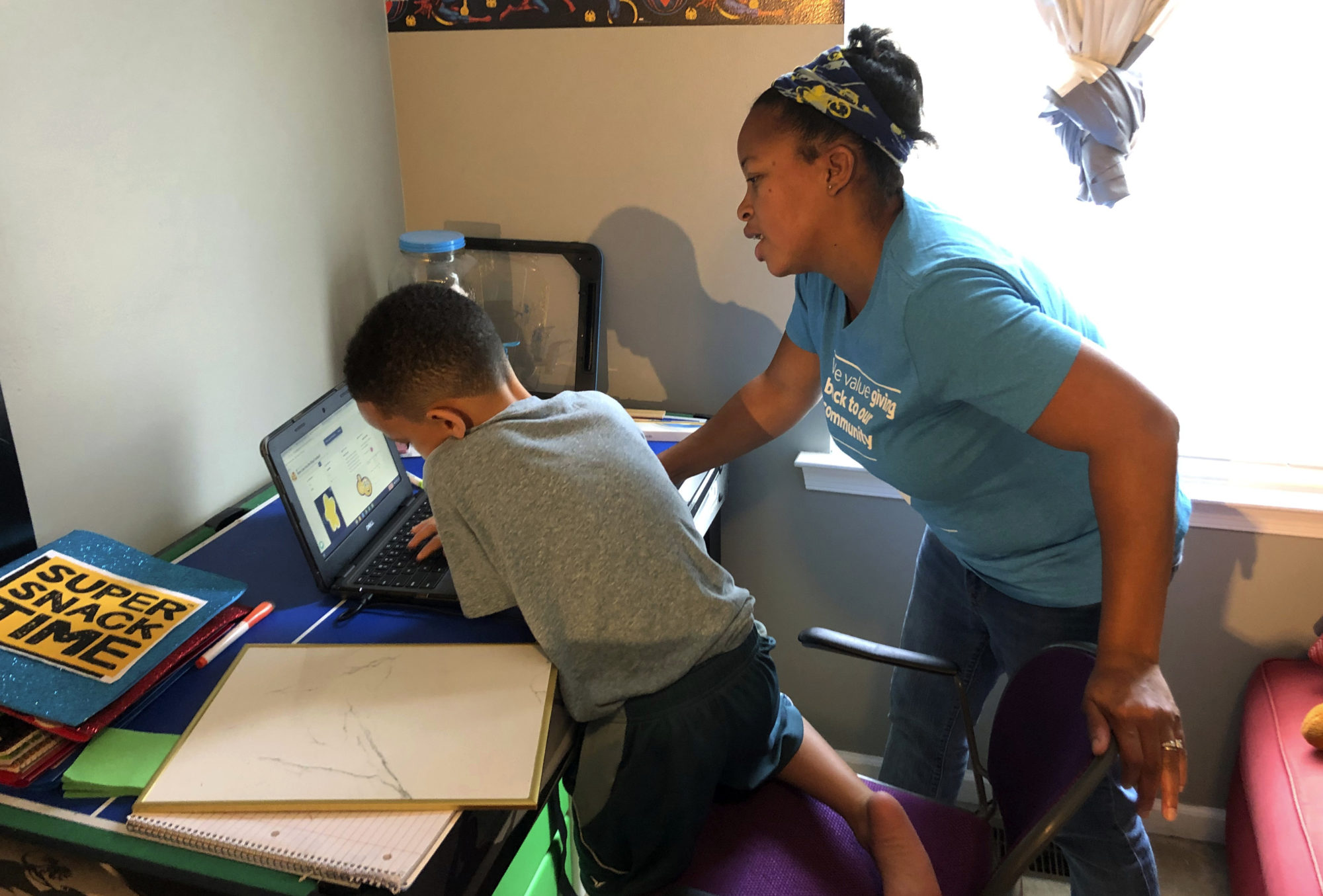
President Joe Biden says he wants most schools serving kindergarten through eighth grade to reopen by late April, but even if that happens, it is likely to leave out millions of students, many of them minorities in urban areas.
“We’re going to see kids fall further and further behind, particularly low-income students of color,” said Shavar Jeffries, president of Democrats for Education Reform. “There’s potentially a generational level of harm that students have suffered from being out of school for so long.”
Like some other officials and education advocates, Jeffries said powerful teachers unions are standing in the way of bringing back students. The unions insist they are acting to protect teachers and students and their families.
In a call Thursday evening with teachers unions, Dr. Anthony Fauci, the federal government’s top infectious disease expert, said the reopening of K-8 classrooms nationally might not be possible on Biden’s time frame. He cited concern over new variants of the virus that allow it to spread more quickly and may be more resistant to vaccines.
Biden is asking for $130 billion for schools to address concerns by unions and school officials as part of a broader coronavirus relief package that faces an uncertain fate in Congress. If his reopening goal is realized, millions of students might still have to keep learning from home, possibly for the rest of the school year.
It’s hard to tally exactly how many schools are open in person now because of the size and diffuse nature of the nation’s school system — and because districts’ approaches change frequently.
By early January, about a third of students in a sample of 1,200 U.S. school districts were in schools where classes had been held exclusively online since last March — many of them in cities. By last week, more than half of students were enrolled in schools where in-person learning was at least an option, according to Burbio, a data service tracking school-opening policies.
For the first time since shuttering schools in March, Atlanta began returning the youngest and special education students to some in-person learning last week. Other districts planning to reopen by early March include Clark County, Nevada, which includes Las Vegas; Kansas City, Missouri; Boston and the big Ohio school systems.
Younger students in New York City already have the option to attend school in-person. Mayor Bill de Blasio said Friday that he expects middle school and high school students back in some capacity later this school year.
Public health officials increasingly say that virus transmissions in schools are low, so long as measures such as mask-wearing and social distancing are in place — even if teachers and other school staff have not received vaccinations.
Randi Weingarten, president of the American Federation of Teachers, said it could be safe to return to schools in the spring semester with rigorous testing programs in place and the option for students and educators to remain online if they choose to.
“Teachers know how important in-person instruction is, but we have to make it safe. Testing and vaccination, as well as masking and distancing, are crucial, as are accommodations for educators at risk,” she said in a statement last week.




2 comments
Sonja Fitch
February 5, 2021 at 5:07 am
Be flexible! Be year round ! Be every day! Our children’s schooling is that important ! Plus the added benefit of a safe place while adults go back to jobs!
TylerWoodby
February 5, 2021 at 8:02 am
I would support year around, but not every day, two on one off is a better schedule.
Comments are closed.